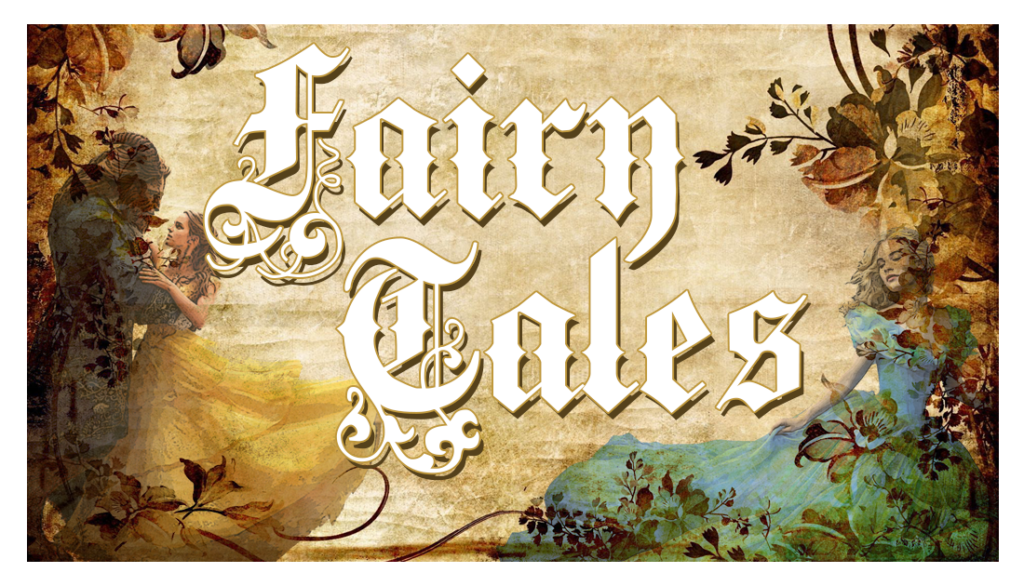A fairy tale, it turns out, does not necessarily have to have fairies in it. Strictly speaking, it’s a story containing folkloric fantasy characters – which means that such fairy-less classics as The Little Mermaid, Jack and the Beanstalk, and The Hobbit are fairy tales. A better term might be “wonder tale.” That said, try these…
Table of Contents
SOME GENERAL RESOURCES
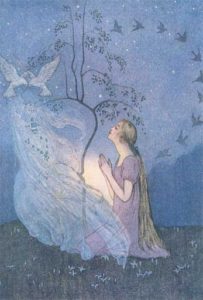 |
Sur la Lune Fairytales is a wonderful compendium of nearly 50 annotated tales, each with a detailed history, gallery of illustrations, book list, and list of similar tales from around the world. A terrific and comprehensive resource for fairy-tale lovers. |
| From the University of Pittsburgh, Folklore and Mythology Electronic Texts has complete texts of an enormous alphabetized list of fairy tales and fables. |
CLASSICS, MORE OR LESS
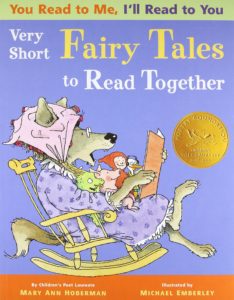
|
Mary Ann Hoberman’s You Read to Me, I’ll Read to You (Little, Brown, 2004) is an illustrated collection of eight very short traditional fairy tales for adults and kids to read together. The stories are written in the form of rhyming poems for two voices (printed in two different colors), and they’re both funny and fun. (“I’m the princess!/I’m the pea!/Look at me!/No, look at me!/Pea, you made me black and blue./I am flat because of you.”) For ages 4-8 and their grown-ups. |
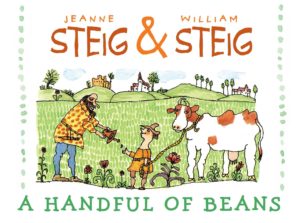
|
Jeanne Steig’s A Handful of Beans (HarperCollins, 1998) is a charming retelling of six classic fairy tales (“Rumpelstiltskin,” “Beauty and the Beast,” “Hansel and Gretel,” “Little Red Riding Hood,” “The Frog Prince,” and “Jack and the Beanstalk”), with personality-laden illustrations by William Steig. Irresistible and infuriatingly out of print. Available from used-book suppliers and libraries. For ages 4-8. |
| Out of print books? Just one more reason to love the library. | |
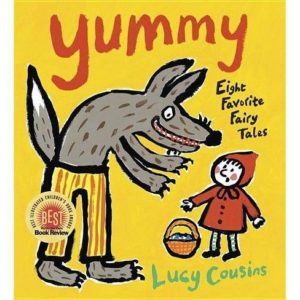
|
By Lucy Cousins of the wonderful Maisy books, Yummy: Eight Favorite Fairytales (Candlewick, 2009) includes such favorites as “The Enormous Turnip,” “Little Red Riding Hood,” “The Bremen Town Musicians,” “The Three Little Pigs,” and “The Billy Goats Gruff.” Warning: there’s a lot of gobbling up. Chosen as a Best Illustrated Children’s Book of the Year. For ages 4-8. |
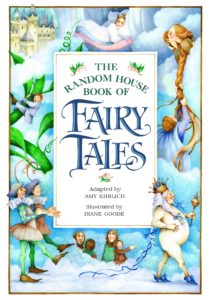
|
Adapted by Amy Ehrlich and gorgeously illustrated by Diane Goode, The Random House Book of Fairy Tales (Random House Books for Young Readers, 1985) is a collection of 19 favorites by such fairy-tale greats as Hans Christian Andersen, Charles Perrault, and the Brothers Grimm. Titles include “Rapunzel,” “The Twelve Dancing Princesses,” “Jack and the Beanstalk,” and “Beauty and the Beast.” For ages 4-12. |
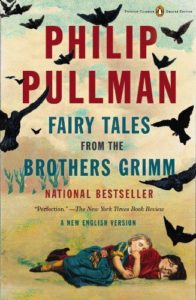
|
Philip Pullman in his 400+-page Fairy Tales From the Brothers Grimm (Viking, 2012) has reworked fifty traditional tales, among them such perennial favorites as “Cinderella,” “Snow White,” “Rumpelstiltskin,” and “Little Red Riding Hood.” Each tale is followed by commentary, a history of the tale, and a list of similar stories. A gem of a book for all ages. |
| From the University of Pittsburgh, The Grimm Brothers’ Home Page has information about the Grimms’ collected fairy tales, a chronology of the Grimm brothers’ lives, and etexts of the stories. | |
| Online texts of 209 Brothers Grimm fairy tales can also be found here. | |
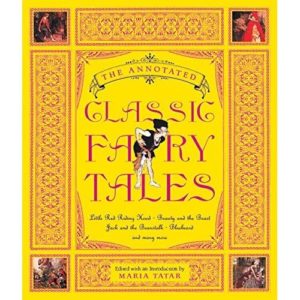
|
Maria Tatar’s The Annotated Classic Fairy Tales (W.W. Norton & Company, 2002) and The Annotated Brothers Grimm (W.W. Norton & Company, 2012) are beautifully designed collections with historical background information, reproductions of classic illustrations, and biographies of prominent fairy-tale writers and collectors. |
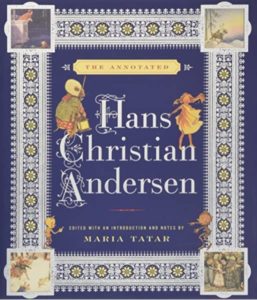
|
The Annotated Hans Christian Andersen (W.W. Norton & Company, 2007) features notes by Harvard fairy-tale scholar Maria Tatar, a biography of Andersen, historical background information on the tales, and wonderful illustrations from earlier editions of Andersen’s works. Stories include twelve for children, among them “The Emperor’s New Clothes,” “The Snow Queen,” “The Princess and the Pea,” “The Ugly Duckling,” and “The Little Mermaid.” A second set of twelve creepier stories is designated “for adults.” |
| Hans Christian Andersen Fairy Tales and Stories has online texts of Andersen’s 168 stories, listed in chronological order. (The thirty most popular are bulleted.) Also at the website: a biography of Andersen, a slide show of Andersen fairy tales on postage stamps, and a rendition of the song “Hans Christian Andersen” by Danny Kaye. | |
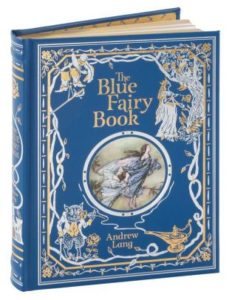
|
Andrew Lang (1844-1912) was the author of twelve fairy tale collections, now known as the Colored Fairy Books. The Blue Fairy Book was the first of the series, originally published in 1889, followed by The Red Fairy Book, then the Green, Yellow, Pink, Grey, Violet, Crimson, Brown, Orange, Olive, and Lilac. All twelve are available in paperback from Dover Publications. Complete texts of all are also available online at World of Tales. |
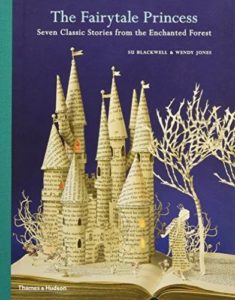
|
Wendy Jones’s The Fairy-Tale Princess: Seven Classic Stories from the Enchanted Forest (Thames & Hudson, 2012) includes the princess-themed stories of Sleeping Beauty, Cinderella, Rapunzel, the Frog Prince, Snow White, the Princess and the Pea, and the Twelve Dancing Princesses – all illustrated with truly spectacular 3-D paper sculptures by Su Blackwell. |
| See a gallery of Blackwell’s paper sculptures here. | |
| Storynory has a large collection of free audio stories for kids, including fairy tales of the Brothers Grimm, Hans Christian Andersen, and Charles Perrault, world folktales, Aesop’s fables, and selections from 1001 Nights. | |
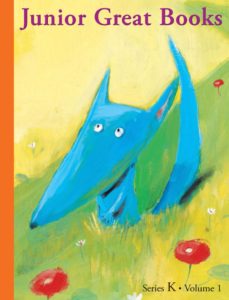
|
The Junior Great Books Grade K-1 program includes “The Shoemaker and the Elves,” “The Frog Prince,” “Hansel and Gretel,” and “Snow White and the Seven Dwarves.” Grade 2 includes “Jack and the Beanstalk,” and Grade 3 “The Fisherman and His Wife” and “The Ugly Duckling.” This is a reading-and-discussion program, based on a “shared inquiry” approach that promotes creative and critical thinking. (Why DID the giant’s wife hide Jack from her husband?) For more information on the books and programs (available for all ages), visit the Great Books Foundation. |
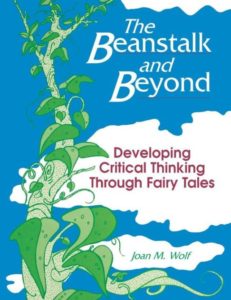
|
Joan Wolf’s 100+-page The Beanstalk and Beyond: Developing Critical Thinking Through Fairy Tales (Libraries Unlimited, 1997) is a creative multidisciplinary collection of extension activities for classic fairy tales. For example, kids make fairytale graphs, invent fairytale quizzes, design original characters, participate in fairytale role play, write a fairy-tale newspaper, create their own original fairy-tale stories and plays, and much more. Targeted at grades 4-8. |
| From Core Knowledge, Fairy Tales and Tall Tales is a detailed eight-lesson study unit targeted at grade 2, covering “The Fisherman and His Wife,” “The Emperor’s New Clothes,” and “Beauty and the Beast,” along with the all-American legends of Paul Bunyan, Pecos Bill, and more. | |
| Hans Christian Andersen’s Fairy Tales is a lesson plan for grades K-2 with discussion questions and activities based on “The Ugly Duckling,” “The Little Mermaid,” “The Emperor’s New Clothes,” “The Little Match Girl,” and “The Darning Needle.” | |
| Fairy Tales Around the World is a lesson plan for grades K-2 in which kids learn what constitutes a fairy tale, discuss different types of fairy tales, and experiment with retelling and illustrating fairy tales. | |
| Fresh Plans has well-organized multidisciplinary lesson plans to accompany The Princess and the Pea, Twelve Dancing Princesses, Foolish Jack, Toads and Diamonds, Little Red Riding Hood, The Boy Who Cried Wolf, Cinderella, and more, with resources, book lists, and activities for English, math, science, social studies, character education, and the arts. Adaptable for a range of ages. |
